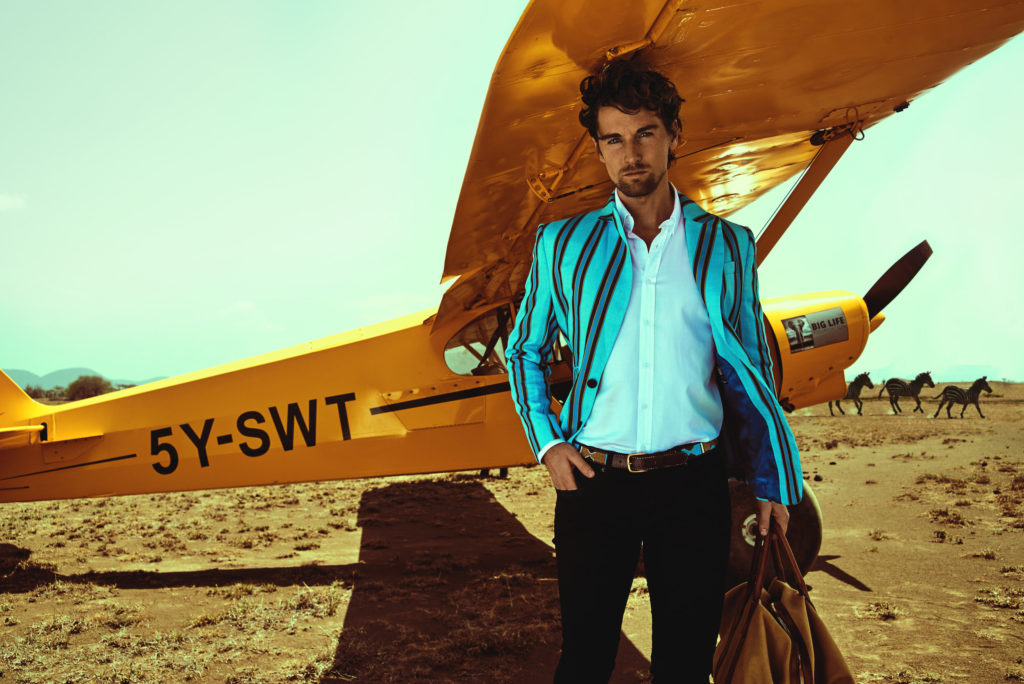Raised in Kenya, brothers Alastair and Jimmy Scott are setting the standard with the founding of Koy Clothing— a luxury clothing brand that pays homage to the African inspiration behind their products. Created with ‘Kikoy’ fabric, a Koy jacket is for the man looking for a well-made garment that is vibrant, detailed, and sure to turn heads! What inspires us about this brand? Koy Clothing gives a portion of their sales back to the African tribes to help support and develop those communities.
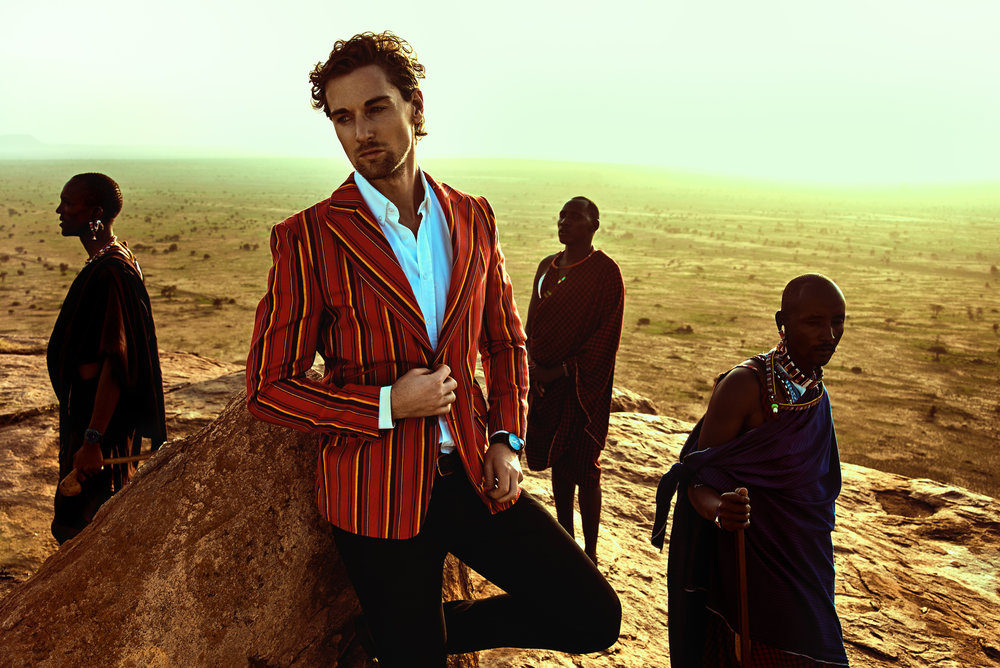
Tell me a bit about yourself and who is Alastair Scott?
My name is Alastair and I was raised in Kenya where my family still lives. Growing up, I was surrounded by Kenyan culture and all these beautiful colors and fabrics. I also came to boarding school in the UK and then continued to university in the UK.
How would you describe Koy to someone who has never heard of it?
We make high-end smart clothing using a traditional African fabric called Kikoy. Our name is Koy Clothing because the fabric itself is called Kikoy which is 100% cotton dyed in Kenya with locally produced colorings. We recognize the tribal influence in our clothing by naming each of our different collections after the different tribes and we also give 5% of the sales back to the tribes themselves to help support and develop the communities. We want to set an example and encourage other communities who are using cultural inspiration to do the same thing.
What does your product line consist of?
We have the flagship product which is the full blazer made of the African vibrant colors. For the more subtle client, we have the plain and navy blazers, as well as the shirts that I’m wearing now.
From start to finish, what is the general process to create a shirt or suit?
Obviously the first step is to source the fabrics. Being from Kenya, we have many connections there within the community— so we look there for the fabrics that we think are most suited to the western market, but also very traditionally Kenyan at the same time. Then we need to design the product— the cut and the fit. That process involves myself and my brother Jimmy— we do a lot of the design work.
What are the biggest joys and satisfactions that you’ve had from working with Koy?
I’ve always been entrepreneurial-minded although I never had my own business. So for me, the satisfaction was actually doing it. I can live my own life, be my own boss and set my own hours. But I don’t feel that I’m working because I’m passionate about building this brand, and to help and support the country that I grew up in. One of the most satisfying feelings was selling a product that I invented, to someone I had never heard of. The positive feedback from customers has been fantastic.
Tell us about another experience where you received valuable feedback.
A huge moment for us was when my brother met with the Maasai elders and handed over the first check from our first year of trading. It was a hugely fulfilling experience to see the pictures and hear how grateful and excited they were about this partnership and the relationship going forward. Now we need to do that with the other four tribes as we are using their influences as well. It’s very exciting.
Do you plan on expanding to other areas once these major tribes are covered?
Kenya has a very unique and diverse culture— there are 42 tribes in Kenya alone who have their own unique languages and ways of life. Ideally, I want to help everyone but there’s a long way to go. We’re helping the Maasai which is not just a Kenyan tribe— they’re in Tanzania as well. My slogan is to make the world a brighter place, but I’ve got to do one step at a time. For now, Kenya will be our focus.
My slogan is to make the world a brighter place, but I’ve got to do one step at a time.
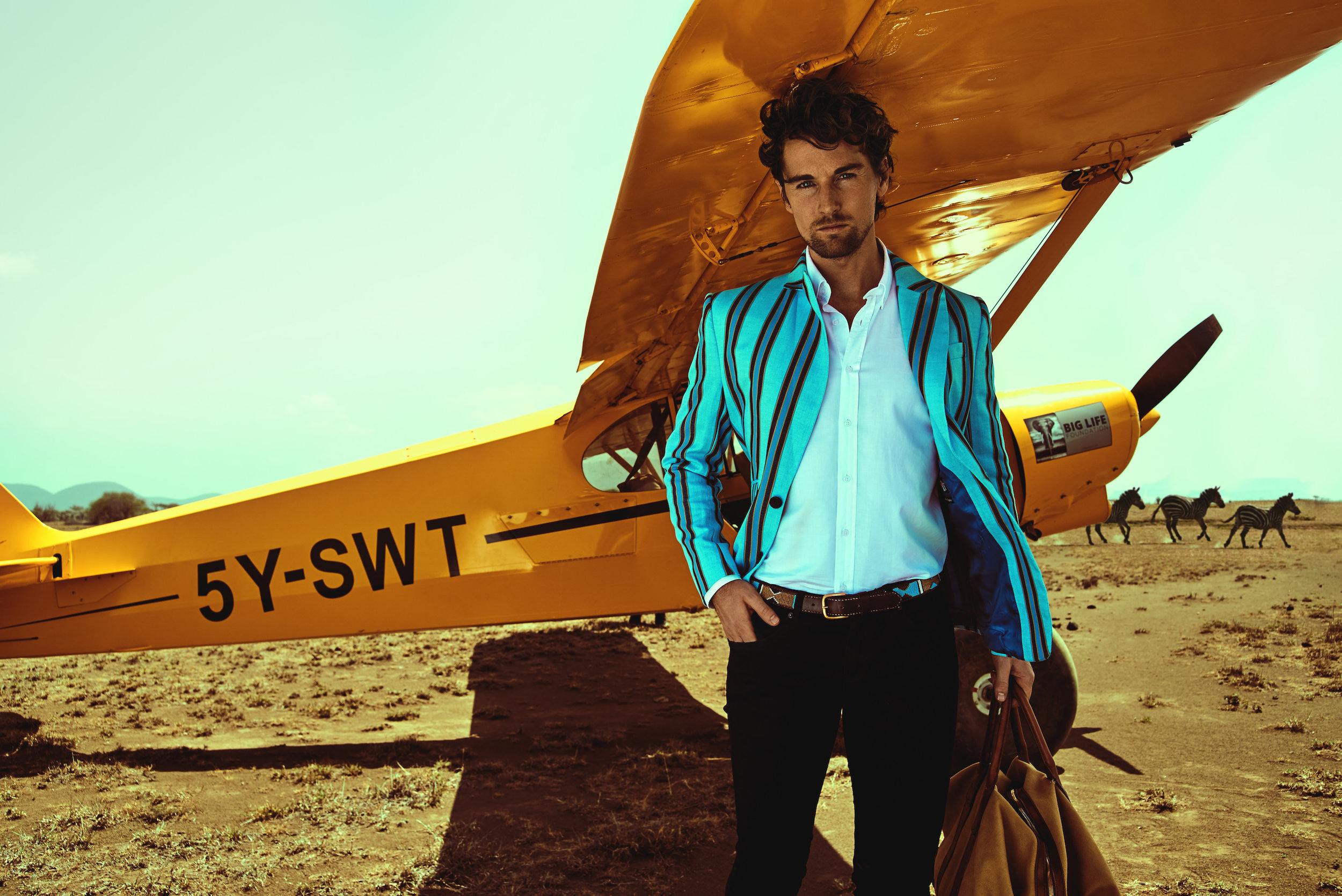
It seems that you have a particular connection to the Maasai.
Yes, the Maasai is probably the most recognizable tribe to a non-Kenyan. People would not have heard of the Luo, Kamba or Gusii, so it was the right place to start to grip the people and help them understand what we’re doing. The Maasai is also one of the bigger tribes and they have their own Intellectual Property Initiative. Position Limited is an IP company have been helping the Maasai over the last 8 years to build the Maasai cultural brand and try to recover earnings from other companies who have used the Maasai name but have not paid them a penny. So we are leading the way as an example. Being that there’s an infrastructure in place, it made sense to start here because with the others we still need to build that. I can’t meet with another tribe and just give them money because it won’t necessarily go to right places— it needs to be properly managed.
Was there a particular tribe that inspired you or a particular tie or affiliation with one of these tribes from your upbringing in Kenya that sparked this idea?
In the modern day in Kenya, people come from all over the country to work in the city together— yet the heritage and culture of each individual tribe is so fresh, and their values are so strong. My experience is therefore with many different tribes because they’re all in one place. I had a very privileged upbringing and our nanny was ‘Luo’ so I learnt a lot from her, as well as others I met in day to day life, the people I went to school with, etc. I love that they all have their own ways of life, languages and behaviors, and it still flows into the modern day.
You yourself sound like you are half Kenyan, half British.
Yes, essentially. And I think that’s why the brand started. My parents are British but I was born in Africa and raised in Kenya, so I got the view of both sides which gave us this ability to see how valuable the fabric was in the western market. Also, being brought up in Kenya where there’s so much inequality, you take it for granted. You see life in its most prosperous and most desperate, and you think that’s the way it is. But in the UK you see that inequality is very low. So it’s fantastic that we can help those in Kenya who are less fortunate because they don’t have the government and systems in place to do it themselves. That’s what charity and international development aid is for, and we want to contribute to that same cause.
You see life in its most prosperous and most desperate, and you think that’s the way it is.
Is that why you want to build the factories there as well?
Yes. Our goal is to make our products in Kenya because to employ Kenyan people is the best way to help them. As soon as we can get the quality right there, then yes, that’s the goal.
Do you foresee any difficulties in having the business develop there and how do you plan on overcoming the obstacles that you anticipate?
Considering that the fabric is originally from Kenya, it will almost be easier to develop the business there. With the internet today, everything is so connected. Even though Kenya is still a little bit slow in that, it won’t be long until I can run the business just as well from Kenya as I can from the UK.
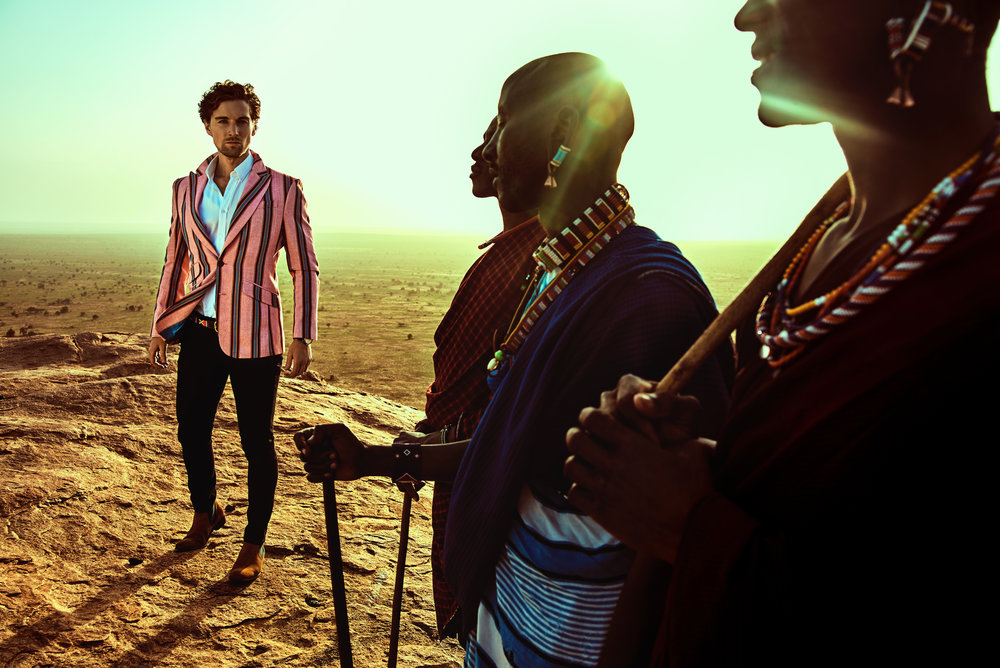
Is the plan to run It from there completely?
Yes, but because there are two of us, one of us will be based there, and one in the UK. I do more of the accounting and operations, so I would be based in Kenya with the production; whereas my brother does the marketing and sales, so he would be in the UK to sell.
Regarding your brother, what’s it like to work with your sibling?
We have a lot of arguments— but because he’s my brother I can say what I want to say; there’s no treading on eggshells. If I was working with someone else and I didn’t like their opinion, maybe I wouldn’t speak up because I wouldn’t want to create conflict. But as brothers we recognize that we’ll have disagreements because we’re passionate about the business and we both want it to work. We just have different opinions of how to get there.
How did the conversation come about to start this together?
It was my brother’s 21st and I wanted to get him a spectacular jacket to stand out from the crowd and look good on his birthday. I was looking in the market and couldn’t find anything right but then I thought about this fabric and decided to get a jacket made for him. He loved it, and everyone else loved it too. It was very bold and very eye-catching, and people started asking him where he got it. It was then that we began making the jackets for some friends (not for profit)— but then one day Jimmy (being the marketing and salesperson that he is) asked: “why don’t we turn this into a business?” I was skeptical at first because we had full time jobs and we didn’t have any money, but we decided to use the savings our dad put aside when we were kids to buy our first car. At first, we made very few jackets and created a website, and then started selling to people that we didn’t know. It wasn’t until that point that we realized the potential of the business. When we sat back and thought more about what we were doing, we decided that we would want to help the tribes whose influence we were using. We realized that we can make a proper brand and do good in the world— help others, help ourselves and do something we love on a full-time basis.
How many fabrics are you working with at the moment?
Right now we have 4 different colors. Kamba, Gusii, Luo and Maasai. I think we will keep those four for a while because we need to build the numbers and see how we’re developing. The more traction we get, the more we will introduce other tribal colors and help the rest of the country— but It’s still early days. We just handed over our first check to the Maasai— that money will go to deprived children school fees which I think is a fantastic cause to start off with. But there are so many other things we can do to help the country in general.
This sounds like it’s more of— I don’t want to use the word charity— but it sounds like you want to help the people of Kenya as much as you want to sell jackets.
Yes, it’s a social enterprise. I’m not claiming I am a charity, but I believe in the win-win. It’s good for me, but it’s also good for them. I think that’s the way the world should work. From a consumer point of view, I think it’s almost better than a charity because I find that when you give money to charity, a lot of the money goes to running the charity and the administrative side of things. With us, a set percentage of what you spend will go to deprived communities, whether or not we make any money.
I’m not claiming I am a charity, but I believe in the win-win. It’s good for me, but it’s also good for them.

Since the brand is very classic but yet very bold and edgy— do you think that it’s more for the classic man or the fashionista?
That’s a tough question because especially with where are going now, it’s much more mass marketable. What we’ve been selling to our main market is an event jacket for someone who wants to look good and stand out at an event. Events such as Polo, Henley Regatta, Lord’s Cricket, Wimbledon and others— sporting events and others are what we’re aiming at.
Are there any other products you want to expand to? Perhaps a women’s line?
Yes, there’s so much we want to do. But we want to get it right and it takes a lot of research and development before we can bring in more products. Regarding womenswear, we will want a woman on board at that point to get proper in-depth insight from someone who is properly invested in the brand.
What do you personally want to see for the product and the company within the next 5-10 years?
We want to expand the product line and build the company in terms of revenue and profitability. Within that, the more our company grows sales wise, the more our contribution back to the country grows. I see us going from strength to strength and becoming more of a household name. At some point we hope to move into retail and be alongside Hugo Boss, Burberry and other brand names.
Are there plans to expand to selling in other countries, or just to the UK?
Definitely. These days you can sell all over the world. As we have completely unique products, we already do sell to other places. If someone sees it and they like it and there’s nowhere else they can get it (and shipping is not that expensive), it’s easy. We’ve invested in the help of Paypal so that our website appears in different languages, countries and currencies to make it easier for shoppers worldwide.
Is this a brand that you also see Kenyans wearing?
I think there’s a market for it but right now in Kenya the people will see the fabric and think that they can take it to a tailor themselves. If we build the brand reputation and people see that’s not just a blazer made out of Kikoy that fits nicely, but it’s a ‘Koy blazer’, then maybe the Kenyans will realize that it’s not so easy to have it made. Our prices are a bit out of the Kenyan market but there’s definitely an upper class that will appreciate the products. We gave some blazers to the Maasai tribe and they absolutely loved them. There is a market there but it’s not our biggest market.
What is your biggest market?
At the moment, the UK.
How does the US compare?
We’ve sold some to the US but not much at all yet.
Why is that so?
Our niche is to tell the story of the brand, but I don’t think it sells well enough on our site because people are impatient and they don’t read. Most people look at the website and don’t realize that there’s an African connection at all. In the UK we built our brand by doing events and explaining it in person— that’s where we can generate a lot of interest. We’re working on the site to make it more personable and interesting, and more immediately African.
When reading your story it’s understood that you don’t just buy a jacket, you also buy a story with it.
Absolutely. That’s becoming more important these days, and we’re lucky to be on trend with it.
What kind of story are you hoping to tell through the video on your website? What is it about Koy that you want to communicate to your customers?
That we are brothers, brought up in Africa, surrounded by these fantastic colors and fantastic people. In the video we meet the inspiration of our brand to give back and support the country that we grew up in. The video will take my brother from our family home in Nairobi on the journey through the beautiful African savanna countryside to the Maasai holy ground, where he meets the tribal elders including the chairman of the International Property Initiative. We try to explain to people what we are doing and encourage other brands to do the same. We can’t change the world on our own, but there are other companies using cultural inspiration— and if they all did what we are doing— that would make a big difference.
Are there in fact other brands that do similar things?
We are the world first to be an official licensee of the Maasai brand, but there are other companies that should be doing the same. I’m not going to name any names- but there are hundreds that should be respecting the cultural inspiration. That’s the whole ethos behind our brand and what we’re trying to do.
Any final thoughts?
We are hopeful that through the brand, people may start to recognize Africa in a more positive light. Not for the fashion, or the clothes, but as a country.
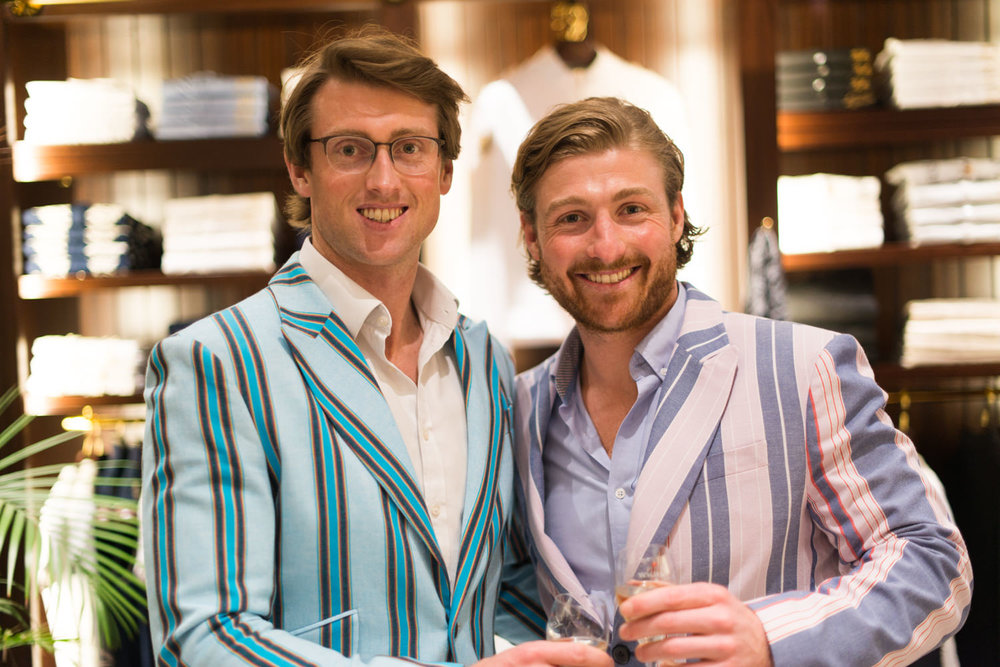
You can visit the Koy Clothing website here.

